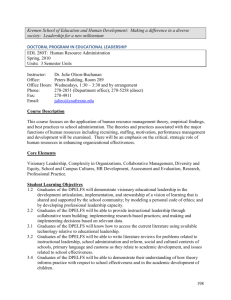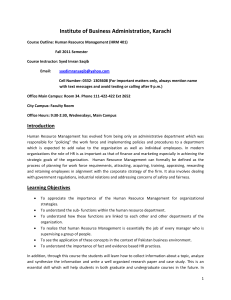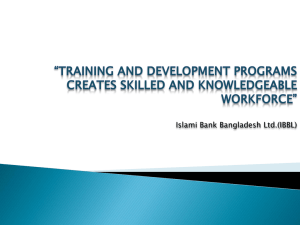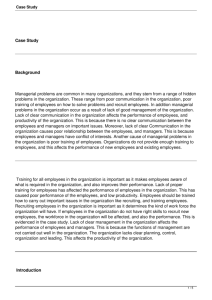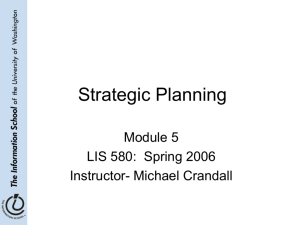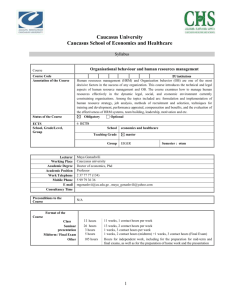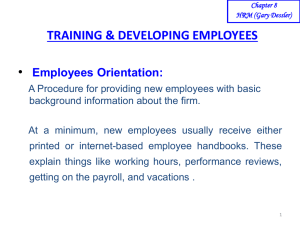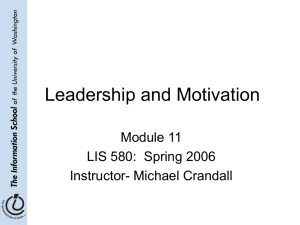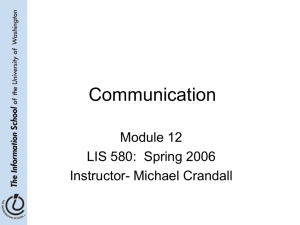Fundamentals of Human Resource Management
advertisement
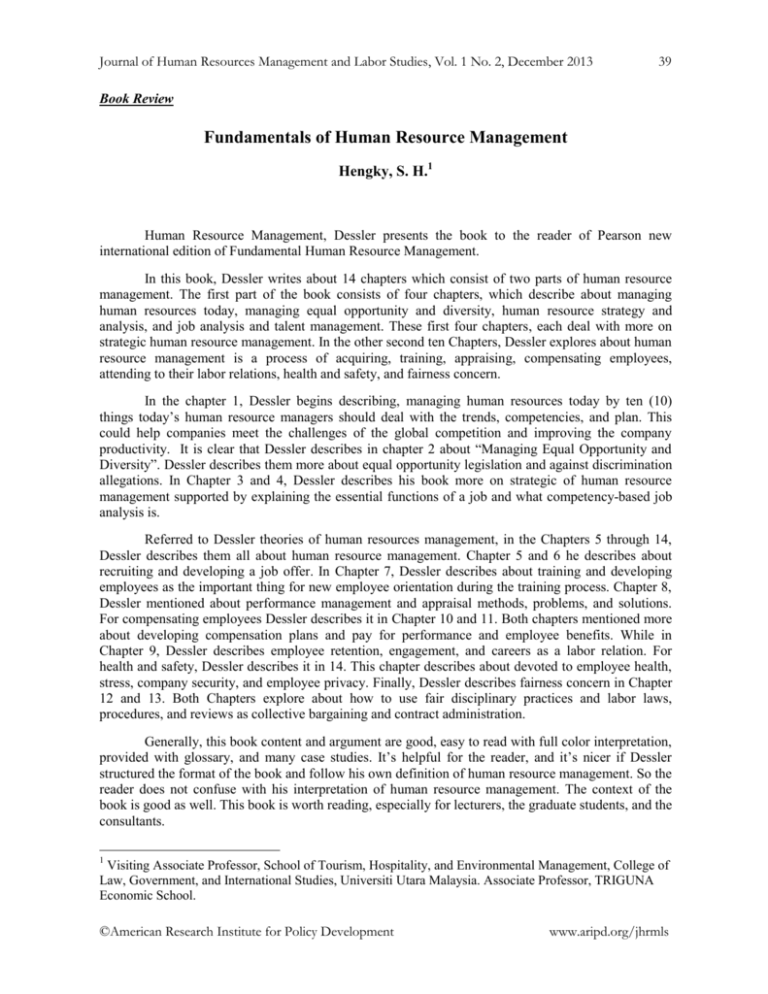
Journal of Human Resources Management and Labor Studies, Vol. 1 No. 2, December 2013 39 Book Review Fundamentals of Human Resource Management Hengky, S. H.1 Human Resource Management, Dessler presents the book to the reader of Pearson new international edition of Fundamental Human Resource Management. In this book, Dessler writes about 14 chapters which consist of two parts of human resource management. The first part of the book consists of four chapters, which describe about managing human resources today, managing equal opportunity and diversity, human resource strategy and analysis, and job analysis and talent management. These first four chapters, each deal with more on strategic human resource management. In the other second ten Chapters, Dessler explores about human resource management is a process of acquiring, training, appraising, compensating employees, attending to their labor relations, health and safety, and fairness concern. In the chapter 1, Dessler begins describing, managing human resources today by ten (10) things today’s human resource managers should deal with the trends, competencies, and plan. This could help companies meet the challenges of the global competition and improving the company productivity. It is clear that Dessler describes in chapter 2 about “Managing Equal Opportunity and Diversity”. Dessler describes them more about equal opportunity legislation and against discrimination allegations. In Chapter 3 and 4, Dessler describes his book more on strategic of human resource management supported by explaining the essential functions of a job and what competency-based job analysis is. Referred to Dessler theories of human resources management, in the Chapters 5 through 14, Dessler describes them all about human resource management. Chapter 5 and 6 he describes about recruiting and developing a job offer. In Chapter 7, Dessler describes about training and developing employees as the important thing for new employee orientation during the training process. Chapter 8, Dessler mentioned about performance management and appraisal methods, problems, and solutions. For compensating employees Dessler describes it in Chapter 10 and 11. Both chapters mentioned more about developing compensation plans and pay for performance and employee benefits. While in Chapter 9, Dessler describes employee retention, engagement, and careers as a labor relation. For health and safety, Dessler describes it in 14. This chapter describes about devoted to employee health, stress, company security, and employee privacy. Finally, Dessler describes fairness concern in Chapter 12 and 13. Both Chapters explore about how to use fair disciplinary practices and labor laws, procedures, and reviews as collective bargaining and contract administration. Generally, this book content and argument are good, easy to read with full color interpretation, provided with glossary, and many case studies. It’s helpful for the reader, and it’s nicer if Dessler structured the format of the book and follow his own definition of human resource management. So the reader does not confuse with his interpretation of human resource management. The context of the book is good as well. This book is worth reading, especially for lecturers, the graduate students, and the consultants. 1 Visiting Associate Professor, School of Tourism, Hospitality, and Environmental Management, College of Law, Government, and International Studies, Universiti Utara Malaysia. Associate Professor, TRIGUNA Economic School. ©American Research Institute for Policy Development www.aripd.org/jhrmls 40 Journal of Human Resources Management and Labor Studies, Vol. 1 No. 2, December 2013 In terms of writing style, and sources as a Bibliography and the Table of the Charts and Figures, Dessler develop the book very well. But the purpose in his writing not consider briefly. As a note, the book format needs to improve especially the Table of Contents would be great if follow his own statement. At the same time, Dessler needs to mention the conclusion of the book. It would help the reader to understand and to follow his knowledge as well. Summary This book is suitable read by lecturers, students, and consultants who explore more about human resource management, but the table of the content does not follow its statement. Overall the book is very friendly and easy to trace, especially for the lecturer and consultants. In terms of human resource management, Dessler needs to enrich organizational behavior as well as the case study. As a note, this book is suitable to read because the layout is well managed with highlight color interpretation. Evaluation of the Text: It is clear that Dessler writes the book and served the content very well: The book clearly written and highlight with color separation. The author seems to achieve his goals. The possibility the book suggests to the management domain readers, researchers, consultants, master level and doctoral level students, and lecturers. The book leaves out the homework for the new edition by following and tailoring the table of content with an author’s own definition. The book compares to others on the subject is deeper and wider. I personally like the book. The book is worth to read. The type of dynamic person like this book. Conclusion According to global market in 2015, I recommend this is the book that the educators, researchers, and consultants worth to buy. This book would be most appropriate for researchers, academics, and lecturers, who conducted their research in human resource management especially for a master level and doctoral levels. ©American Research Institute for Policy Development www.aripd.org/ jhrmls
